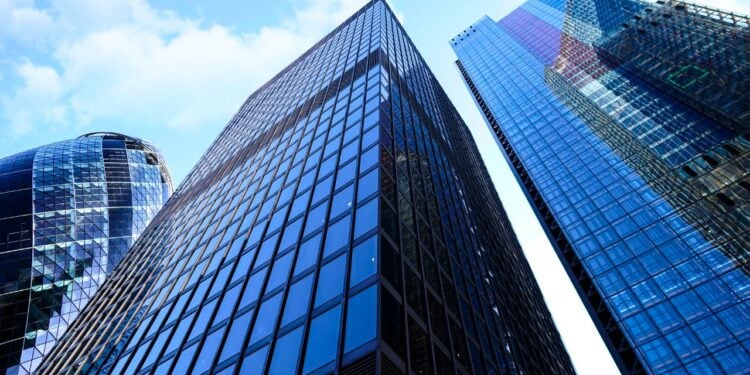- Hybrid working is now commonplace for most white-collar workers, but an increasing number of workers are coming into the office during the week.
- The flexible workspaces of today are beautiful and amenity-rich, with fitness studios and outdoor spaces popular offerings to entice people back into the office.
- Local workspaces are meeting the demand for working near home, including coworking in pubs, cafes, and business parks.
The U.K. flexible workspace market is still adapting to shifting workplace practices and market situations following the last few years of volatile market conditions. As businesses and workers seek balance in a post-pandemic world, the flexible workspace industry booms.
Jane Sartin, Executive Director of Flexible Space Association, shared her expert opinion on the state of the U.K. flexible workspace market and how it will continue to evolve in the future of work.
Hybrid working is the new norm
At the height of the pandemic, many white-collar workers believed that working from home would be forever. But workplace practices have changed, and Sartin says that “hybrid working arrangements feel quite settled now.”
In November 2023, a study conducted by recruitment company Hays found that only 18% of U.K. workers were fully remote, while “69% of employers in London were offering hybrid working.”
Larger corporations want to see their employees back working together and collaboratively in the office, even hosting breakfasts and events to help get people back into the workplace. But, the consensus is that workers may decide when and where works best for them, depending on their circumstances.
Some people “don’t have the arrangements to be able to work from home,” explained Sartin, nor is remote the most effective way of working for them. Sartin herself takes virtual meetings from home in the mornings, avoiding any interruptions, before going into the office mid-morning.
Living in a commuter town, Sartin sees Tuesdays through to Thursdays as the busiest days for city commuters, with Mondays growing in popularity. Train lines have become busier but continue throughout the day rather than at pre-pandemic rush hour times (before 9 a.m. and after 4 p.m.).
There’s speculation that workers will return to their London offices as much as before the pandemic, however, Sartin reckons that “working life has become more flexible…the idea that you have to be sitting at a desk in an office between 9 a.m. and 5:30 p.m. has gone for many people.”
This is supported by recent reforms, including the Flexible Working Bill passed last year, protecting workers’ rights to work flexibly.
Top-of-the-range amenities alongside workspace
Following the gradual shift from 100% remote working to hybrid, the expectations for today’s workspace have altered along with shifting working lifestyles. Offices look beautiful, and “it’s not unusual to walk into a workspace and feel like walking into a 5-star hotel now…the design levels are pretty high,” Sartin describes.
Enticing workers back into the office, top-of-the-range amenities — gyms, yoga studios, rooftops, podcast studios, and even private Members’ Clubs are sitting alongside flexible workspace. As Sartin puts it, “the competition keeps increasing as to what can be provided.”
For instance, Flexible Space Association member Square Works offers a hotel, private Members’ Club, serviced office and coworking space, all-in-one renovated Georgian townhouse in Bristol.
Sartin sees a growing number of workspaces utilizing rooftop space, planting trees, shrubbery, and flowers to give workers much-needed respite while staying close to the office, particularly in cities where green space is scarcer.
“Outdoor office space is a crucial amenity” benefiting mental and physical wellbeing, states GPAD, a London-based architectural practice. Sartin says that outdoor spaces and studios are “a win-win for everybody…it provides space for someone to run a class and brings people in.”
“The best thing about the flex industry is that there is something for everybody,” continues Sartin. While some companies require a blank office space to put their mark on, others look for desk space with breakout areas and tables for greater team collaboration.

Working near home is part of the flex trend
The U.K. flex market is fairly London-centric, with Savills recently reporting that in the U.K. 82% of take-up for flexible workspaces in 2023 was based in the capital. Nonetheless, “workspace doesn’t feel like it’s just about the city,” declares Sartin.
Last year, the regional cities, including Manchester, Birmingham, and Glasgow, accounted for 15% of take-up, some responding to the historic undersupply of flexible office space in the regional market. Even rural areas have office space, albeit on a different scale from workspaces in the city.
Working near home is part of the flexible working trend. In Sartin’s local area, for example, “there is a coworking space above the post office, it has a townhouse building that’s being converted into flexible offices and coworking space.”
Even coffee shops (notorious for banning laptops or cutting off WIFI to restrict remote workers from camping out in their spaces) are embracing this trend by creating designated coworking rooms that stop cafes from looking like offices.
Workspaces can also be found in business parks (typically located on the periphery of a town or city), and even pubs have become popular coworking spots for remote workers seeking that all-important social interaction.
Flexible working isn’t just for white-collar workers either, as physiotherapists, and photographers require local workspaces — Sartin has even visited a dressmaker’s studio.
Workspaces support solo business owners to grow their companies, providing space for community, and enabling personal relationships to flourish between owners, occupiers, and beyond.
“People have got established with the idea of coworking spaces, they’re looking at where else that could be…being able to work flexibly means you can work in all sorts of different places, so it diversifies that,” concludes Sartin.
Given the flexible nature of coworking and shared workspaces, it’s clear that this movement is here to stay, supporting a range of workers as they adapt to the future of work.


 Dr. Gleb Tsipursky – The Office Whisperer
Dr. Gleb Tsipursky – The Office Whisperer Nirit Cohen – WorkFutures
Nirit Cohen – WorkFutures Angela Howard – Culture Expert
Angela Howard – Culture Expert Drew Jones – Design & Innovation
Drew Jones – Design & Innovation Jonathan Price – CRE & Flex Expert
Jonathan Price – CRE & Flex Expert














